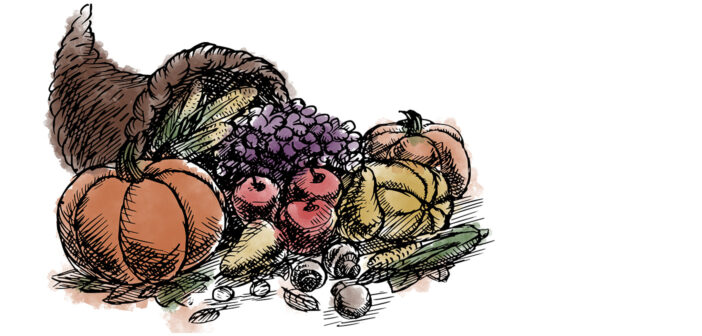Since before many of us can remember, the cornucopia has been a symbol of autumn and has adorned many tables in celebration of our Thanksgiving holiday. From the Latin Cornu Copiae meaning “horn of abundance” the item is traditionally pictured or modeled as a horn-shaped wicker basket overflowing with produce, flowers, fruits or nuts. In centuries past, baskets of this form were used in Asia and Central Europe by workers during harvest season, worn strapped and slung around the shoulder and then filled with picked bounty.
The origin of the cornucopia can be traced back to a pair of myths written in the ancient world. In Greek mythology, when the infant Zeus was hidden from his child-devouring father Cronus in a cave under Mount Ida, he was cared for by the divine goat, Amaltheia, who fed him on her milk. When playing with the goat, Zeus with his godly strength accidentally broke off one of Amaltheia’s horns. The horn then had the power to provide a constant flow of nourishment in many forms. In Roman mythology, it was through the power of Hercules that the cornucopia was discovered. As he wrestled with the river god Achelous, Hercules ripped off one of the god’s horns which then produced an unending bounty from its center. Since the birth of the myths, for Romans and Greeks, the cornucopia became a symbol of the harvest, prosperity and abundance. Through the ages, the symbol has passed down to different and new civilizations and continues to carry the same meaning today.
This Thanksgiving, the “Horn of Plenty” should be seen as a representation of all that we have – food, family, friends, etc. And, if we have excess, if we are lucky to have a true cornucopia of unending nourishment, we should not hesitate to share it. Remember: Thanksgiving is about welcome, good cheer and giving to those we care about and to those without.
Happy Thanksgiving to you and yours from My City.





